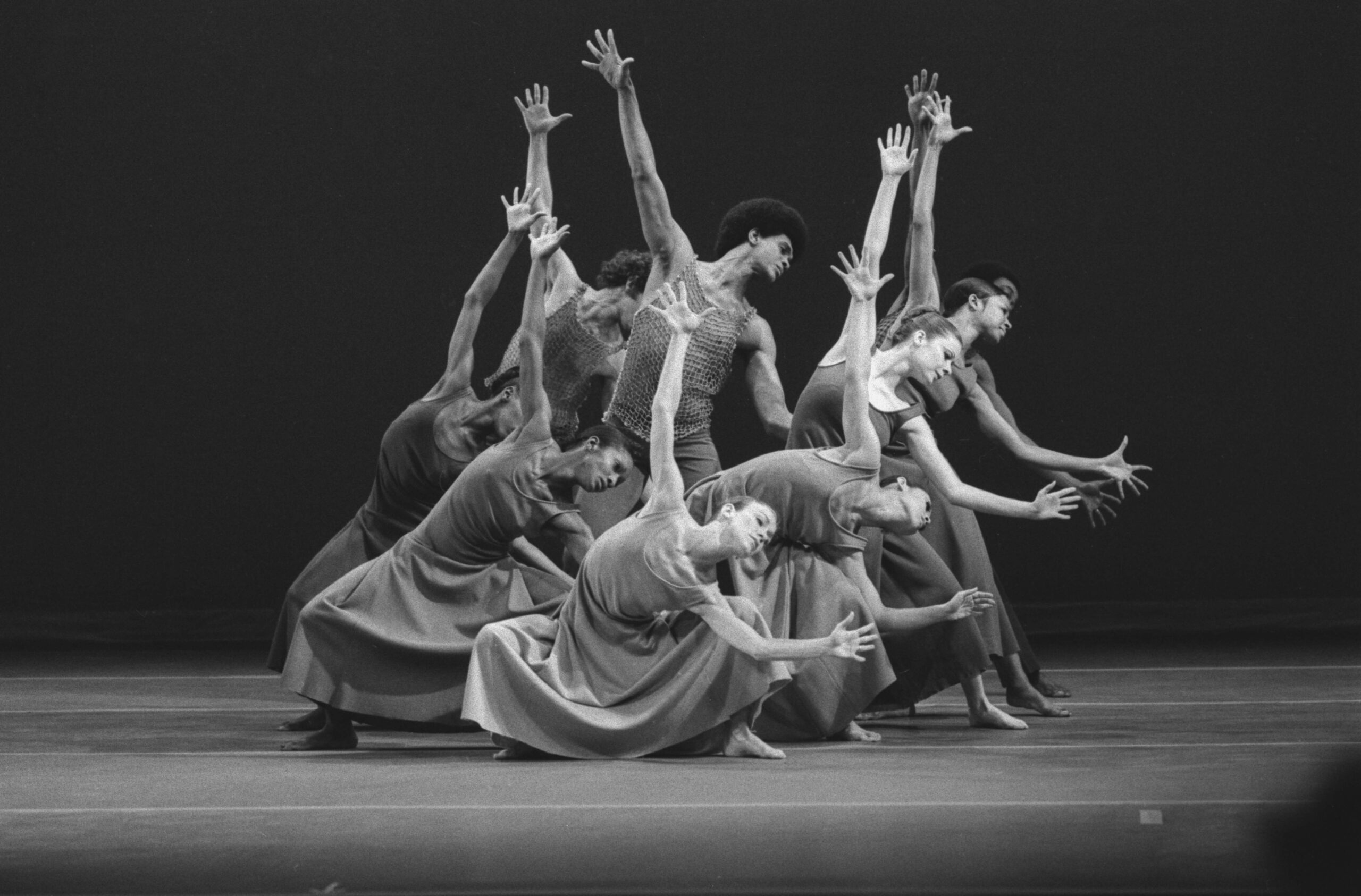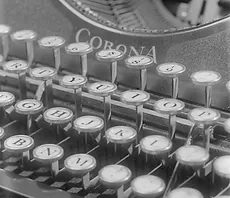Photo by Hulton Archive/Evening Standard/Getty Images
Two dancers, their hands interlocked, twist in place before the camera lens. Without speaking the same language, they communicate through movement: their bodies take up complementary, mirror-image postures. Although the dancers are of different races, genders, and nationalities, it is clear that they stand on equal footing. They are true partners, inhabiting the same space, together.

Photo by Bettmann Archive/Getty Images
This image of dancers Judith Jamison and Mikhail Baryshnikov was taken before the premiere of Pas de “Duke” (1976), a duet by the renowned African American choreographer Alvin Ailey (1931-1989, photographed below in 1983). He created the piece to showcase the talents of Jamison, his revered muse, alongside those of Baryshnikov, the recently-defected Soviet ballet star.
The duet marked a watershed moment in the history of American concert dance. It also embodied Ailey’s animating ideas about African American life, history, and art, which sustained his creative practice throughout his career.
Born in 1931 in Rogers, Texas, Ailey’s childhood unfolded in the shadow of the Great Depression and under the stifling thumb of Jim Crow. He quickly sensed the affirming, healing power of music for his family and neighbors, especially the blues at Saturday night socials and spirituals during Sunday church services. The communal acts of singing and dancing provided vehicles for celebration, joy, and dignity in an environment otherwise dominated by fear, violence, and demeaning labor.

Photo by Bettmann Archive/Getty Images
When Ailey moved to Los Angeles with his mother in 1942, he found himself surrounded by—and utterly fascinated with—new cultures, languages, and customs. He began taking dance classes with Lester Horton, whose modern dance troupe was one of few racially integrated companies at that time.
This experience gave Ailey a deep appreciation for pluralism as a unique strength of American culture. Upon moving to New York and founding his company, the Alvin Ailey American Dance Theater (AAADT), in 1958, Ailey followed his mentor’s lead and hired a multiracial company of dancers, which he described as embodying “America at its best.”
Yet Ailey also committed himself to telling Black stories on the concert stage, elevating African Americans’ contributions to this diverse American culture. His earliest works of choreography dealt explicitly with African American heritage while emphasizing universal human truths. In this way, he sought to foster empathy across lines of racial difference while educating audiences about the beauty and breadth of African American art.
No piece better encapsulates Ailey’s core philosophy than his masterpiece, Revelations (1960). In three sections, it traces African American spirituality from enslavement through the present day. While Revelations clearly springs from Ailey’s lived experience as a Black man, his abstracted choreography serves to emphasize universal human experiences: striving despite struggle, faith in the promise of redemption, and the healing power of community.
Revelations—pictured below in a still from a 1973 performance at Sadler’s Wells in London—received glowing praise upon its premiere and quickly became a staple of the AAADT’s repertory. Throughout the 1960s, the company performed the piece across the United States and abroad through State Department-sponsored cultural diplomacy tours. To this day, the AAADT still performs Revelations on every program, and it is thought to be the most-viewed work of modern dance choreography ever created.
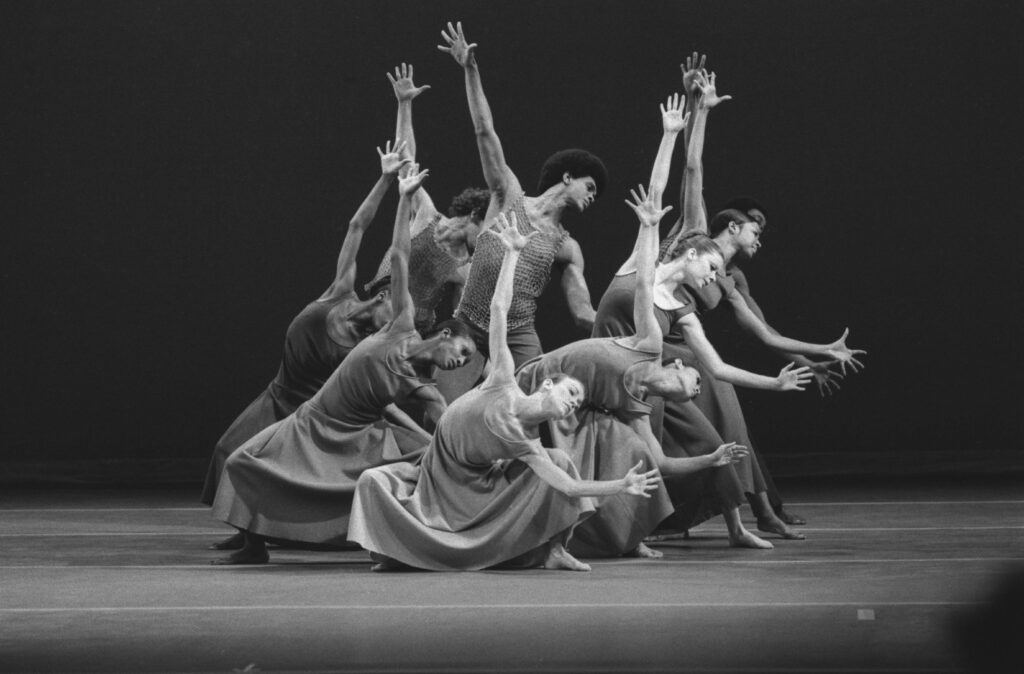
At the height of his national and global acclaim, Ailey choreographed a suite of dances to premiere during the American bicentennial in 1976. These dances honored the composer Duke Ellington, who had recently died in 1974.
In choosing this subject, Ailey presented Ellington as an American hero and “true genius” whose music defied categorization and transcended racist stereotypes about jazz. As he had done in Revelations, he sought to elevate a specific aspect of African American culture while emphasizing its universal appeal.
The crown jewel of this choreographic suite was Pas De “Duke,” a duet for Jamison and Baryshnikov. Jamison, who joined Ailey’s company in 1965, defied racist stereotypes in the dance world with her technical prowess and enchanting stage presence, earning her an international fan base. (She is photographed here in 1973.)
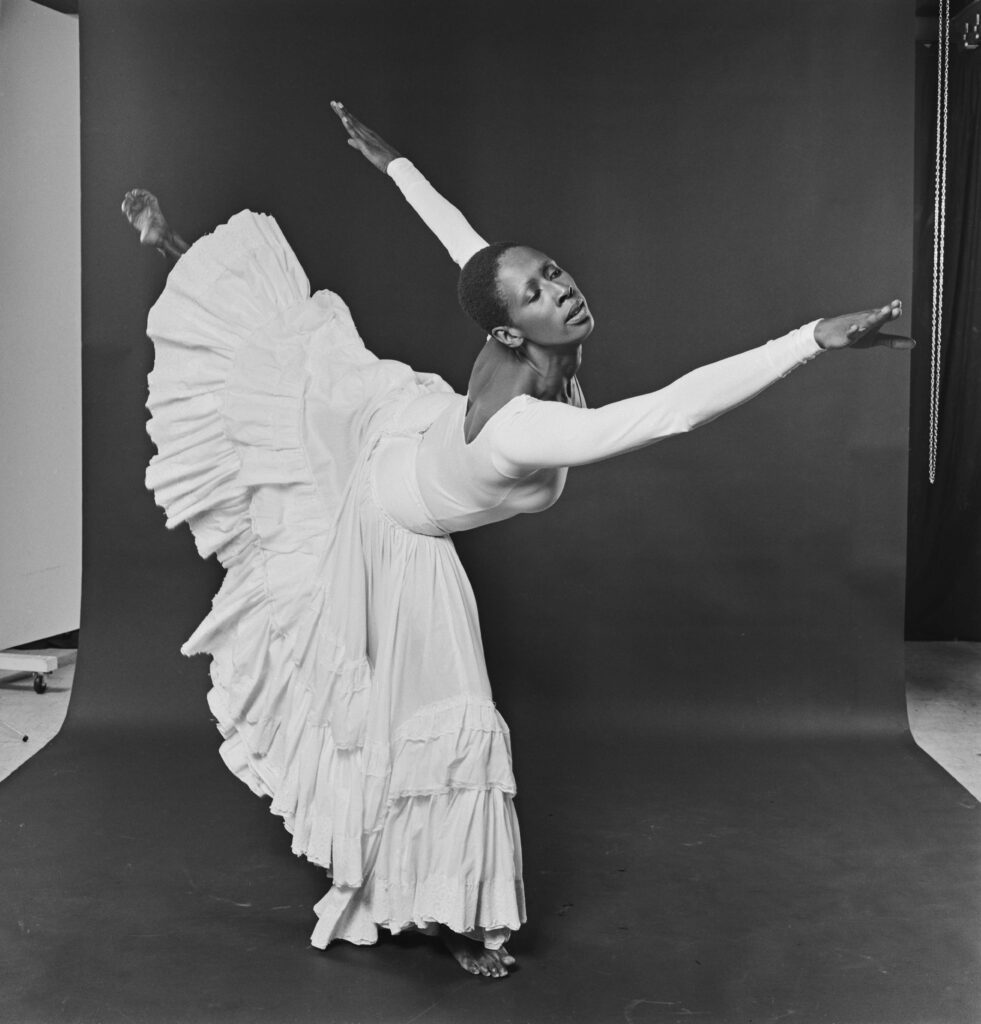
Photo by Hulton Archive/M. McKeown/Getty Images
Baryshnikov also gained a global following with his highly publicized defection from the Soviet Union. His decision to work with Ailey marked an important embrace of the “American way” amid the ongoing Cold War—and, in turn, affirmed Ailey as a quintessentially American artist.
Pas de “Duke” presented a friendly contest between the two powerhouse performers, with virtuosic solos interspersed with taunting gestures and cheeky moments of unison. Fusing movements from classical ballet, modern dance, and jazz, Ailey’s choreography challenged the dancers to embody each other’s signature styles.
In one moment, Jamison traversed the stage with a series of chaînes leaps, typically performed by male ballet dancers. In another, Baryshnikov tilted into the “flat back” posture invented by Ailey’s mentor Lester Horton, a position antithetical to ballet training.
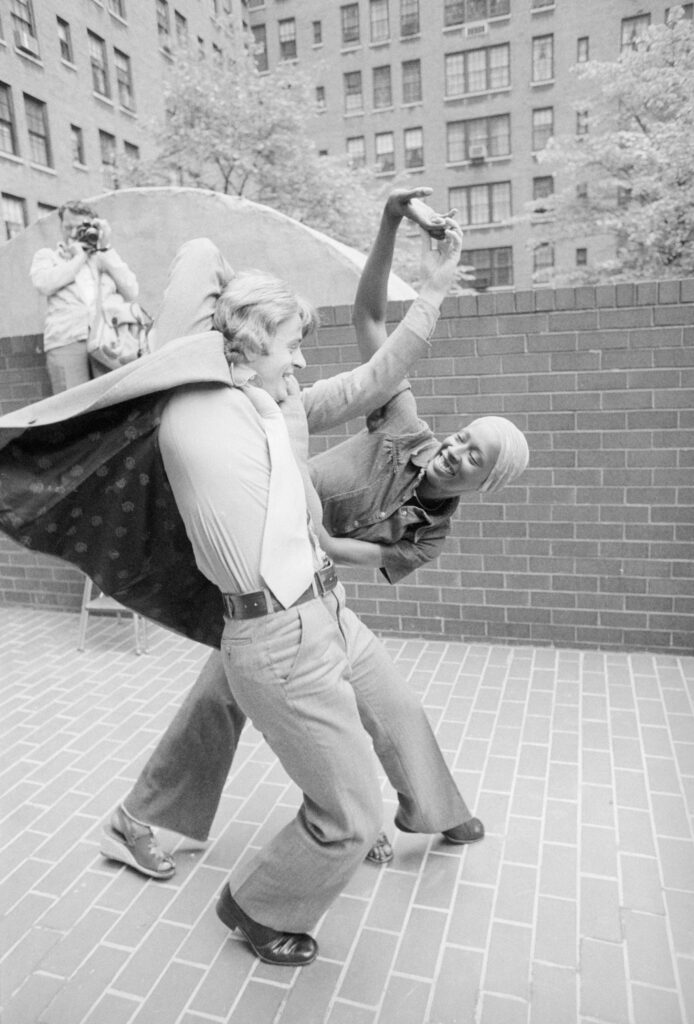
Photo by Bettmann Archive/Getty Images
As Jamison and Baryshnikov performed Pas de “Duke,” they literally embodied the fusion of cultural influences that had long fascinated Ailey and informed his artistic philosophy. Yet, by setting this dance to Ellington’s music, Ailey ensured that audiences would recognize the foundational role of Black art within this pluralistic culture. In other words, they would regard African American culture as quintessentially American culture.
Like Revelations, Pas de “Duke” is still regularly performed by the Alvin Ailey American Dance Theater. Even without the star power of its original muses, the choreography conveys Ailey’s immense stylistic range and innate ability to fuse disparate artistic traditions in a celebration of diversity.
Nearly four decades after his death, Alvin Ailey remains one of the most beloved and well-known American choreographers. His enduring popularity suggests the potency of dance as an art form and its ability to convey new ideas about African American identity, life, and culture. Using the universal language of movement, Ailey successfully bridged cultures and generations to celebrate American pluralism and emphasize the vital contributions of African Americans to the American canon.

Learn More:
Ailey, Alvin. Pas De Duke (excerpt) https://www.youtube.com/watch?v=iq9_Ozp_WPs (accessed 22 July 2024).
Ailey, Alvin. Revelations (1960) https://www.youtube.com/watch?v=kDXerubF4I4 (accessed 18 July 2024).
DeFrantz, Thomas. Alvin Ailey’s Embodiment of African American Culture. New York: Oxford University Press, 2004.
Dunning, Jennifer. Alvin Ailey: A Life in Dance. Reading: Addison-Wesley, 1996.
Hawk, Emily. “The Choreographer as Intellectual: Alvin Ailey’s Ideas about Black Modern Dance.” Journal of American Culture 44, no. 3: pp. 237-247.
Holloway, Jonathan Scott. Chapter 3, “The Black Body as Archive of Memory” in Jim Crow Wisdom: Memory and Identity in Black America Since 1940. Chapel Hill: University of North Carolina Press, 2013.
Jack Mitchell Photography of the Alvin Ailey American Dance Theater Collection, National Museum of African American History and Culture, Smithsonian Institution. https://www.si.edu/object/archives/sova-nmaahc-a2013-245 (accessed 18 July 2024).
“Judith Jamison: Dancer and Choreographer,” Smithsonian Institution. https://www.si.edu/spotlight/judith-jamison (accessed 23 July 2024).
“The Pas de Trois Behind ‘Pas de Duke’,” New York Times (26 November 2006). https://www.nytimes.com/2006/11/26/arts/dance/26dunn.html?smid=url-share (accessed 18 July 2024).
Wignot, Jamila, dir. Ailey (2021). (streaming on Hulu).[upcoming] Edges of Ailey exhibition, Whitney Museum of Art, New York, NY (25 September 2024 – 9 February 2025) https://whitney.org/exhibitions/edges-of-ailey


